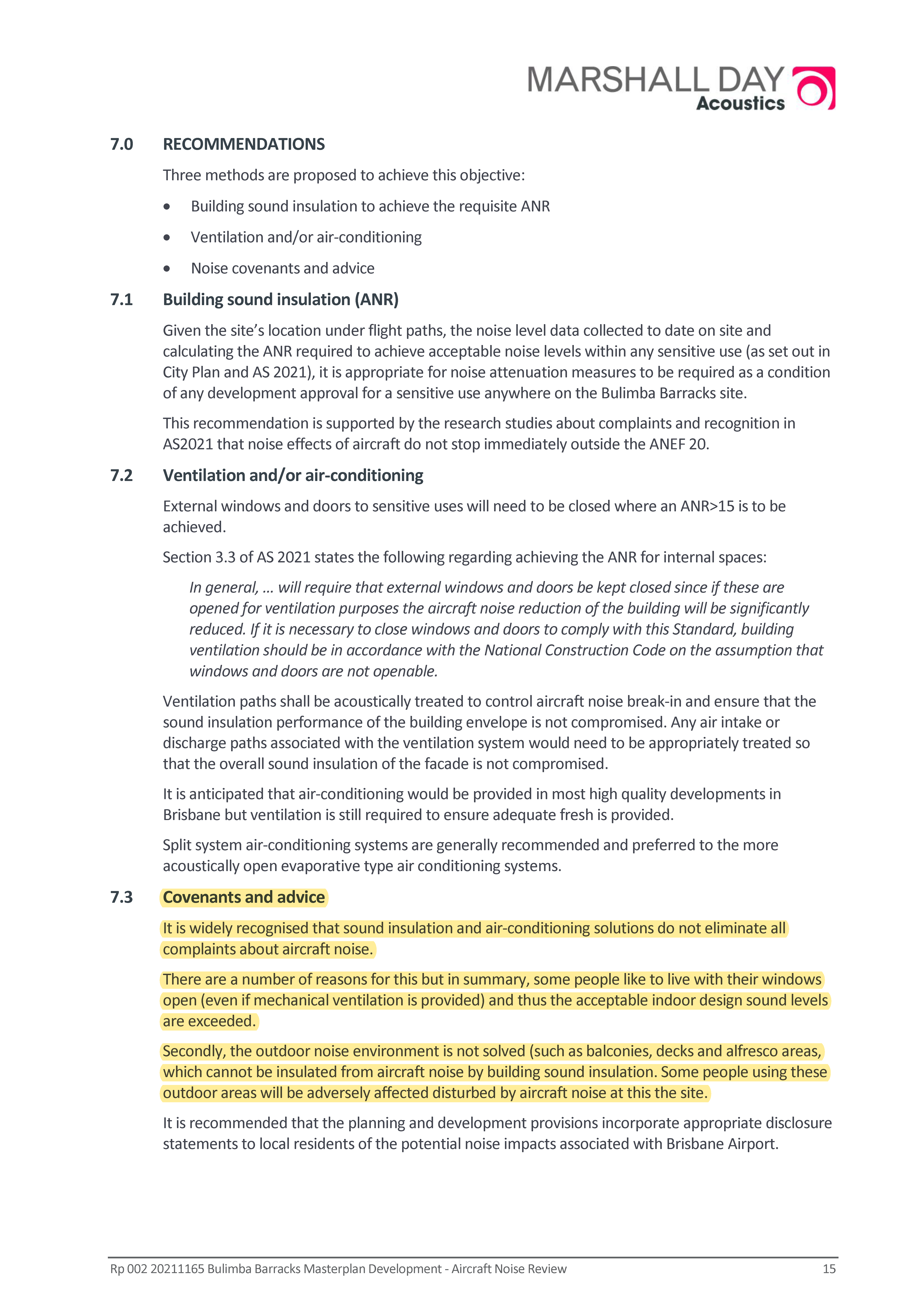60 Reasons to Protest: Reason #26 – Brisbane Airport wants to gag noise complainants
On 10 Dec 2021, Brisbane Airport Corporation (BAC) submitted a request to Brisbane City Council urging them to require the registration of a covenant that will restrict future home buyers from making aircraft noise complaints at the $63 million master-planned 855-home Bulimba Barracks site.
This means BAC admits that Brisbane suburbs already similarly impacted by flight noise between 60-70 decibels on a daily basis are incompatible with residential living. 🤯
The screenshots below show excerpts from BAC’s submission, which not only demonstrate their admission of fault for having ruined Brisbane already but also illustrate the influence and control they wield over all levels of government. BAC are not only trying to gag noise complainants, they also argue that their Aerotropolis growth and profit aspirations should take priority over the needs of suburban residents because their mates in the Queensland State Planning Policy area recognise Brisbane Airport as a “strategic airport.”





What is a covenant?
Registering a covenant is a legal instrument to prevent noise complaints from future residents of a planned residential development located near an airport. Once the local government agrees for a covenant to be registered on the title of the land for the residential development, it imposes certain restrictions or obligations on future homeowners. The purpose of registering a covenant is to inform and warn potential buyers of the existence of excessive aircraft noise pollution in the area. The covenant typically highlights that the residential property is located in a high-noise area due to its proximity to the airport. By registering this covenant, BAC wants to prevent future residents from making noise complaints against the airport or seeking legal recourse for the noise disturbance caused by aircraft operations.
How much is too much?
We covered in protest reason #58 that aviation noise is largely unregulated as there is no regulated maximum noise level for aircraft flying over residential areas.
However, when it comes to land use planning, the flawed and outdated “Aircraft Noise Exposure Forecast” (ANEF) approach is still used. Residential development is only deemed acceptable outside the ANEF 20 contour, which represents an average noise exposure level of 20 aircraft noise events per day. Residential developments located within or near the ANEF 20 contour are typically subject to additional planning assessments and mitigation measures to manage the potential noise impacts on future residents. For example, near the proposed Western Sydney Airport new residential developments will not be permitted where the ANEF exceeds 20.
Do you experience “aircraft noise events” of 20 or more? Then your suburb is not compatible with residential living.
The Australia Government in its 2016 National Airports Safeguarding Framework (specifically, Guideline A: Measures for Managing Impacts of Aircraft Noise, Attachment 1—Supplementary Aircraft Noise Metrics) suggested the ANEF approach is flawed:
“Experience has shown a range of problems with relying solely on the ANEF as a noise information tool as there are limitations in using the ANEF to describe aircraft noise exposure to laypeople.
While the populations with the highest aircraft noise exposure often live within the 20 ANEF contour, experience shows the majority of noise complaints that are received come from residents living outside the 20 ANEF contour. Traditionally the residents of these areas have been given little information on aircraft noise through the ANEF system other than that the area is considered ‘acceptable’ for housing. Some people living outside the 20 ANEF contour have been given an expectation of receiving little or indeed no aircraft noise and as a consequence find the levels of noise actually experienced to be unacceptable.
[…] land use planning could be improved through recognition that aircraft noise does not suddenly stop at the 20 ANEF contour.” (p. 1)
Yet, land use planning policies as well as the current “manner of endorsement” of ANEFs approved by the Minister of Infrastructure and Transport in April 2017 don’t take the government’s OWN advice into account.
Register for the BFPCA protest:
Discuss this in the BFPCA Facebook group:


